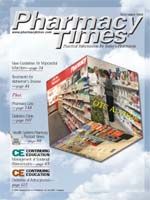Publication
Article
Pharmacy Times
Behavioral Problems in the LTC Environment
Imagine that you were taking a patient's blood pressure and that the patient, concerned about the cuff's tightness, bit your hand? One rarely experiences this kind of violence and aggression in pharmacy practice. In long-term care (LTC) facilities, however, harm to residents, staff members, and property occurs with frightening frequency. Resident assaults against LTC nursing assistants are common, with 59% assaulted at least weekly and 16% assaulted daily.1 Understandably, behavior problems can lessen care quality.
Can medication help? Yes, it can, but only after alternatives have been tried. Certifying and accrediting bodies now discourage the use of unnecessary physical or chemical restraints.
A Pervasive Problem
Unfortunately, complicated environments or medical conditions increase the potential for aggression.2 Although impulsive or aggressive patients are associated with psychiatric milieus, they also appear in extended and acute medical care environments.
Generally, aggression is any behavior that may lead to destruction of a target entity,3 or a maladaptive, defensive behavioral response to real or perceived provocation that becomes troublesome when it is disproportionate to its legitimate adaptive role.4 Escalating aggression frequently leads to violence (physical damage to persons or property).3 Violence and aggression, also called dyscontrol, are symptoms rather than diseases. They can be dealt with effectively, but they require intervention and ongoing attention. Clinicians and caretakers, however, often instinctually flee or ignore the problem.
Environment Versus Biology
Clinicians should start by identifying possible causes.3,5,6 Experts recommend recording the resident's dyscontrol pattern and exploring possible relationships with 5 environmental (sometimes called event-related) or biological (non?event-related) factors5,6 (Table 1).
Environmentally induced dyscontrol often responds to behavioral interventions alone. Whereas short-term or as-needed medication can help, prolonged drug treatment rarely is required.6 Table 2 summarizes conditions that may cause aggression and violence.2,5-7
Integrated Efforts
Residents rarely experience only environmental or only biological dyscontrol but usually are affected by both factors. Traditionally, seclusion, restraint, and the use of "prn" psychotropic medications were considered appropriate interventions for agitated residents. A better understanding has improved the approach to these individuals.2,8 Thus, integrating behavioral interventions and medication is essential.
Step 1: Prevention
LTC facilities should emphasize prevention. Staff members should recognize warning signs in aggressive residents, intervene to decrease agitation, and keep these residents in the least restrictive environment.2,8 When dyscontrol becomes a problem, wise clinicians use prn medication judiciously and early in the episode.2,3 In most instances, an oral or injectable benzodiazepine (usually lorazepam) works quickly and protects other residents, staff members, and visitors from harm.3,6 Used appropriately, benzodiazepines are safe and effective. Chronic use, however, may lead to disinhibition and an increase in the very symptoms being treated.6,9,10
The nursing staff should employ behavioral interventions quickly, decisively, calmly, and with confidence. Group contagion?like that seen when a group of happy children transforms into a quarreling mob?explains why incidents of aggression and violence increase when residents assemble for meals.2,8 Table 3 lists initial behavioral modification techniques to increase structure and maintain control.2-4,8,9
Step 2: Medication
If underlying biological causes are identified, clinicians may prescribe chronic, scheduled medication.6,9 Table 47-11 describes drugs that have been used with varying degrees of success. Unfortunately, their effectiveness often has not been confirmed by sound clinical trials. If no cause is identified and the behavior continues, different medications can be tried sequentially and systematically. Beta-blockers and antidepressants in particular require trials of 6 weeks or more.6-9 As always, pharmacists should examine issues of polypharmacy, comorbidity, risk/benefit ratio, and compromised organ function.
Step 3: Integrating
If long-term medication is necessary, residents also will benefit from behavioral modification techniques, such as token economies (patients earning tokens when behaviors improve and exchanging them for an item or privilege)6; aggression replacement (using other mechanisms and improving communication to express anger or frustration)6,8; and decelerative techniques (social separation, including time-outs, isolation, or seclusion). Decelerative techniques are the last used because of their punitive nature. Physical restraints should be used only as a last resort.2,6,8
Conclusion
Pharmacists can help prescribers choose appropriate medications for agitated patients. The goal should be to significantly decrease incidents of aggression and violence in the LTC facility.
Ms. Yeznach Wick is a senior clinical research pharmacist at the National Cancer Institute, National Institutes of Health. Dr. Zanni is a health-systems consultant and a former commissioner of mental health for the District of Columbia. The opinions expressed are those of the authors and not necessarily those of any government agency.
For a list of references, send a stamped, self-addressed envelope to: References Department, Attn. A. Stahl, Pharmacy Times, 241 Forsgate Drive, Jamesburg, NJ 08831; or send an e-mail request to: astahl@mwc.com.







